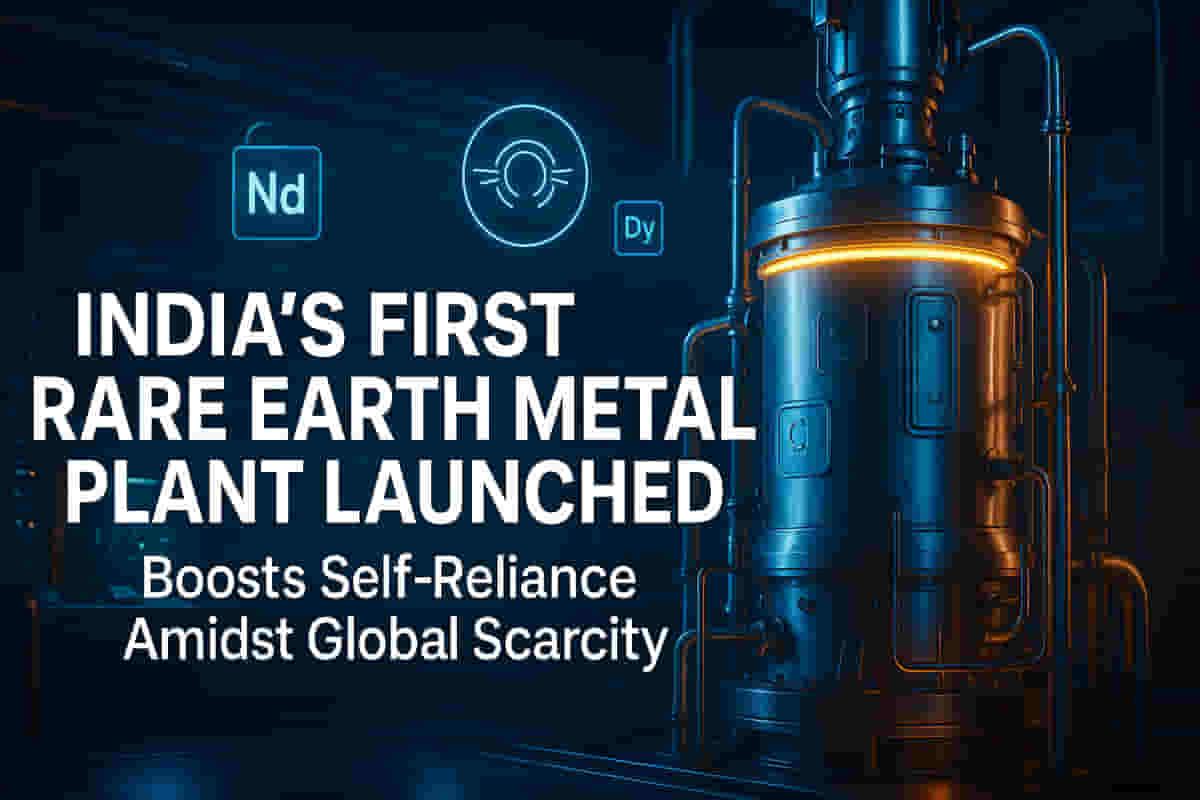India Launches First Rare Earth Metals Plant Amidst Global Supply Concerns
Industrial Goods/Services
|
31st October 2025, 12:34 AM

▶
Short Description :
Detailed Coverage :
Ashvini Magnets, a Pune-based company, has unveiled India's first indigenous rare earth metals plant, a significant development for the nation's strategic material independence. Collaborating with the Bhabha Atomic Research Centre (BARC) and supported by a Ministry of Mines grant, the plant boasts a capacity to produce 15 tonnes per month of both light and heavy rare earth metals. The output includes NdPr (neodymium praseodymium) metal, which is essential for manufacturing high-strength NdFEB rare earth magnets. These magnets are critical components for electric vehicle (EV) motors, MRI machines, consumer electronics, and industrial equipment, potentially meeting 20-25% of India's requirement for this alloy.
Impact: This breakthrough is a crucial step towards reducing India's reliance on imports for strategic materials, particularly in light of China's recent export restrictions on rare earth magnets and processing equipment. It enhances India's bargaining power with magnet makers and supports the growth of domestic industries like EVs and renewable energy. However, a significant bottleneck persists: India currently lacks the capacity to produce high-powered sintered magnets, the most advanced type, with technology largely concentrated in China and Japan. The domestically produced rare earth metals are also expected to be 15-20% more expensive due to the absence of economies of scale.
Rating: 8/10
Difficult terms: Rare Earth Metals: A group of 17 chemical elements crucial for many modern technologies, used in everything from electronics to defense systems. NdPr (Neodymium Praseodymium): A vital alloy of two rare earth elements used to create powerful permanent magnets. NdFEB rare earth magnets: Neodymium-Iron-Boron magnets, the strongest type of permanent magnets, made using NdPr, essential for high-performance applications. EV motors: Electric Vehicle motors, requiring high-strength magnets for efficiency and performance. BARC (Bhabha Atomic Research Centre): India's premier nuclear research institution, involved in advanced technology development. Bonded Magnets: Magnets made by mixing magnetic powder with a binder, suitable for less demanding applications. Sintered Magnets: High-performance magnets created by compacting and heating magnetic powders to form a solid block, used in demanding applications like EV motors. Economies of scale: Cost advantages achieved when production becomes efficient due to increased output; larger scale usually means lower per-unit costs. Consumables: Materials used up during a manufacturing or operational process. Molten Salt Electrolysis: A method for extracting metals by passing an electric current through a molten salt. Calcio-thermic Reduction: A chemical process using calcium to reduce metal oxides into pure metals.